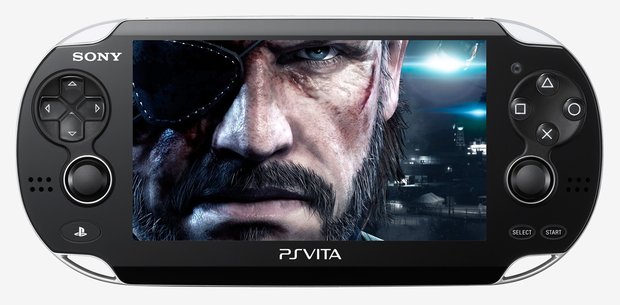Vita is much better off as a PS4 peripheral, and Sony knows it
If you’ll excuse my starting this article with a desperately ‘specific’ cultural reference, I currently find it impossible to separate Sony’s PlayStation Vita strategy from Mike Nichols’ 1988 romantic comedy-drama, Working Girl. The plot of said genre-classic follows Melanie Griffith’s lowly Staten Island secretary on her journey through the back-stabbing, cutthroat world of corporate America, and on to her ultimate triumph over--and implied redemption of--that cold, merciless infrastructure by being a bit cleverer about her own back-stabbing, cutthroat, non-mercy. But doing so while also remaining nice.

The key plot-point of the film occurs when Griffith’s Tess takes advantage of her boss’ absence through ski-related injury to steal control of an in-progress media merger, convincing the client to move into the smaller but more profitable area of radio rather than TV. While accepting the deal, the client tells the allegorical story of how a truck wedged under a low-ceilinged tunnel was once released simply by letting a little air out of the tyres. By shifting focus to a less glamourous, less extravagant ambition, the company had ultimately come to a more successful solution. And that, friends, by way of a now highly tortured metaphor for a pre-existing, 26 year-old metaphor, is where the PlayStation Vita is right now.
Because, now, finally, for the first time in its nearly three-year life, the Vita has a future. Because finally, the Vita has an identity that--while less high-falutin’ than its original inception as ‘the PS3 in your pocket’--makes sense.
Applied to its handhelds, Sony’s bullishly naïve attitude saw it completely misunderstand the culture of portable gaming. While Nintendo’s DS range was pushing new, instinctive ways of interacting with bite-sized, pick-up-and-play gaming, Sony was trying to sell the world on bus-based blockbusters, travel-sized AAA, and pocket cinema. It just didn’t fit, and while Sony’s handhelds have done well, compared to Nintendo’s comfortable 23-year domination of the market, they misfired rather awkwardly. Let us not forget that this is an area of gaming first settled by the pared-down hardware of a monochrome screen, and a simple but incandescently addictive block-puzzler.
But now, the stale air hissing from its previously stuck tyres, the Vita seems to have found its own way. No longer fighting the wrong battle with the wrong weapons, this past E3 saw Vita positioned not as the deranged Ronin of old, aimlessly swinging a depleted blade at the ghost of a long-gone enemy, but as a strong, tactically capable right-hand soldier for General PS4 in his escalating battle against Microsoft.
By reinventing the Vita as a super-charged peripheral for its new-gen home console, Sony has done both a machines a huge favour. Facilitating streamed remote-play, cloud-powered, portable, cross-platform play, and a handy, well-equipped solution to second-screen gaming--the Vita’s physical controls and rear touchpad make it a more suitable and versatile device than any tablet, or even Nintendo’s GamePad--the PS4 and Vita combo is a far more imposing proposition than either machine was on its own, both now brimming with new, co-op possibilities for the future.

We’re looking at new types of games, new ways of playing games and ways of enjoying unbroken gameplay whenever and wherever your real-life schedule might endeavour to throw a spanner in the works. That last point is more important than it might at first seem. Not just a convenience, the facility actually ties in perfectly with Sony’s current move to take the PlayStation brand and experience beyond the limits of traditional living room hardware. With the Gaikai-powered PlayStation Now streaming service set to soon bring the PlayStation back-catalogue to a host of devices, from traditional consoles to Bravia smart TVs, Vita’s role as an internet-equipped thing with a screen just became a whole lot more important from an ambassadorial point of view.
Weekly digests, tales from the communities you love, and more
Of course, the above would mean less if Vita was still primarily, erroneously weighed down with AAA games of its own. But again, by allowing that unsuitable area of gaming to dry up while pushing the now almost ubiquitous model of cross-buying for smaller PS3 and PS4 games--whereby a single purchase furnishes the buyer with both home and portable versions--Sony has finally found its own, modern equivalent of the games that made the Game Boy and DS fly. Hello, indie revolution.
Inventive yet focused, creative yet accessible, games like Stealth Inc., Lone Survivor, Guacamelee, Thomas Was Alone, and Sound Shapes are perfect fits for portable and home gaming alike, cloud–saves even allowing one continuous game to be played on both devices. Vita finally has the bountiful, engaging, entirely suitable line-up of games it always needed, but like all of the big wins I’m talking about today, that catalogue is the result not of pushing Vita as a platform in itself, but as an amplifier for the great things already happening on the ‘big’ PlayStations.

Because that’s what Sony’s new, smarter, integrated PlayStation outlook is all about. No longer is it forcing flat, lozenge-shaped pegs into round holes and hoping that the public eventually agree to buy what it thinks they should want. Instead it’s looking at a bigger, more organic, more unified vision of what PlayStation entertainment is and can be, and finding out where Vita can naturally fit into that.
The AAA, high-fidelity, pocket PlayStation? However many times the Vita tried to fulfil that role, the vacancy never really existed. But the high-spec PS4 augmentation? The premium-grade add-on, that brings value, versatility and empowerment to PlayStation player and brand alike? That’s where it can excel. If we can just see that long-awaited Vita/PS4 bundle re-priced with a tempting discount for Christmas, the standalone unit knocked down, and all of its newfound usefulness pushed to the forefront of Sony’s marketing, this time next year the health of both current PS machines could be so rude as to be borderline obscene.



